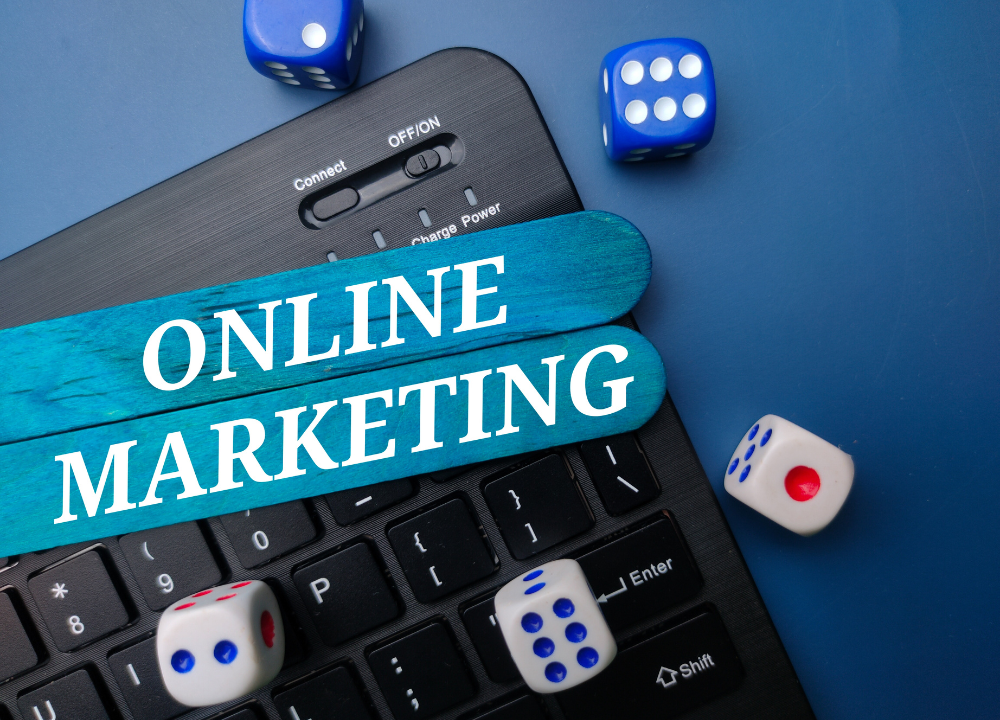Brand Building 101: How to Build a Successful Brand

- Why is Building a Strong Brand Important for Business Success?
- What are the Major Elements of a Successful Brand Identity?
- How Can Storytelling Help in Brand Building?
- How to Build a Brand That Has a Strong Brand Image?
- How Can Social Media Contribute to Brand Building?
- Build a Successful Brand With Emeritus
Walter Landor, founder of Landor & Fitch, a popular design agency, once said, “Products are made in factories, but brands are created in mind.” Let’s say someone goes to buy chocolates for a friend’s birthday. They chance upon a specific chocolate brand that has an instant recall. This example shows that effective brand building shapes how consumers see and remember a brand, making it a key factor in influencing user perception. Read ahead to learn how to build a brand successfully.
In this blog, you will learn:
- Why is building a strong brand important for business success?
- What are the key elements of a successful brand identity?
- How can storytelling help in brand building?
- What are some effective strategies for building brand awareness?
- How can social media contribute to brand building?
Why is Building a Strong Brand Important for Business Success?
 Branding has always been a crucial part of business, but with social media, it’s more important now than ever before. Social media platforms introduce customers to new brands every day. Moreover, it allows them to research and find out the best brand for their needs. Therefore, companies need to go the extra mile to stay ahead of the competition. To do this, companies need to invest in strong brand practices that will keep their customers hooked. Besides this, here are some reasons why companies should have a strong brand.
Branding has always been a crucial part of business, but with social media, it’s more important now than ever before. Social media platforms introduce customers to new brands every day. Moreover, it allows them to research and find out the best brand for their needs. Therefore, companies need to go the extra mile to stay ahead of the competition. To do this, companies need to invest in strong brand practices that will keep their customers hooked. Besides this, here are some reasons why companies should have a strong brand.
1. Customer Recognition
Branding is more important than one thinks. On the outside, it might seem to be about logos, colors, photography, copy, etc., but in reality, it’s about how customers recognize a brand. For instance, if a customer shops for a specific product and finds a new brand stocked on the shelves, they are more likely to stick with a brand they are used to. This could be due to different reasons, ranging from a positive product experience to interactive and effective brand messaging.
Therefore, companies that have a strong brand image are more likely to have better customer recognition, leading to better sales and market share.
2. Customer Loyalty
Once customers recognize a business and purchase its products, a strong branding strategy ensures they keep returning for more. This promotes customer loyalty and increases customer satisfaction. A remarkable example of customer loyalty is Apple. According to a study, 92.6% of iPhone users intend to stick with Apple for their next smartphone. The brand has made this possible by cultivating a loyal customer base by fostering deep emotional connections with its customers through storytelling, innovative products, and user experiences.
3. Credibility
Strong branding boosts business credibility, both with customers and within the industry. Moreover, clear and distinct messaging makes the brand more reputable to customers and competitors.
Furthermore, businesses can increase their credibility by seeking testimonials from past customers. Testimonials can successfully enhance credibility and trust in the brand and its products or services.
4. Brand Equity
Strong branding builds robust brand equity, which means businesses can have more control and say in the market over their competitors. A good example is Apple’s AirPods, which has been dominating the headset market since its launch. A 2019 report clearly states that Apple is leading the headset market worldwide, surpassing its competitors like Samsung, Xiaomi, Skullcandy, and Boat.
ALSO WATCH: Interpersonal Excellence by Meenakshi Srivastava, Founder at Core Shifts
What are the Major Elements of a Successful Brand Identity?
 Brand identity shapes customers’ emotions and attitudes toward the brand. It encompasses the brand name, logo, colors, typography, slogans, packaging, and overall visual and verbal style. For instance, Amul has achieved remarkable success in establishing a robust brand identity. Amul Girl, its iconic mascot, has created a unique and recognizable brand identity for Amul.
Brand identity shapes customers’ emotions and attitudes toward the brand. It encompasses the brand name, logo, colors, typography, slogans, packaging, and overall visual and verbal style. For instance, Amul has achieved remarkable success in establishing a robust brand identity. Amul Girl, its iconic mascot, has created a unique and recognizable brand identity for Amul.
1. Brand Name
It defines a company and its offerings. It also helps audiences differentiate between companies within the same product category.
2. Logo
A logo is crucial for brand recognition. It appears on the company’s website, emails, and products, making it easily recognizable to audiences. Some brands use words and a brand name as recognizable logos, like Google, while others are often image-based, like Nike.
3. Graphics and Images
Graphics and image elements that represent a brand’s unique identity. That is, they visually represent the brand and make it easily recognizable among consumers.
4. Color Scheme
A brand’s color scheme is essential since it impacts all visual branding elements like logos, marketing materials, and graphics. A well-executed scheme prompts quick brand recognition.
5. Typography
It involves using consistent fonts across all the business materials for cohesive branding.
ALSO READ: Brand Marketing and Content Marketing: Meaning, Strategies, Different Concepts
How Can Storytelling Help in Brand Building?
Businesses generally use brand storytelling to form a stronger bond with their target audience. Storytelling helps form an emotional connection between a brand and its customers. For example, Amazon’s Apni Dukan marketing campaign celebrated lasting bonds and human connections. The ad campaign put together relatable real-life situations to highlight features like one-day delivery, easy returns, and Cash on Delivery (COD).
The campaign wanted to establish Amazon as the neighborhood kirana store that customers are familiar with and have complete trust in. Furthermore, the campaign aimed to bridge the gap between the brand and its consumers through an emotional approach.
Just like Amazon, new businesses can also use brand storytelling to create a brand. Meanwhile, let’s look at a few benefits of brand storytelling for new brands.
- Increases audience engagement
- Increases brand recognition
- Develops strong customer emotions
- Increases customer loyalty
How to Build a Brand That Has a Strong Brand Image?
Ever wondered, “How to build a brand?” Well, here are some of the effective strategies for building a strong brand.
1. Advertise, Advertise, and Advertise
Advertising primarily focuses on highlighting a product rather than the brand itself. Despite this, ads are still one of the most effective tools for increasing brand awareness.
Businesses should begin with online advertising, such as Pay-Per-Click (PPC) ads. There are several marketing channels where businesses can advertise. For example, Zomato utilizes different forms of marketing to promote its food delivery services. It uses social media, SMS marketing, online ads, and print ads. As a result of this, Zomato has become a household name.
3. Brand Ambassador
Companies with bigger marketing budgets can hire brand ambassadors to humanize their brands and create a friendly image. For instance, Nykaa uses makeup artists and influencers to promote new product launches, festive offers, and discounts. The brand received 1.5 million orders a month and over 15 million registered users as of June 2021 due to this campaign.
4. Create a Short and Catchy Slogan
Crafting a short and compelling slogan or motto is essential for a strong brand awareness strategy. It communicates a business’s uniqueness and benefits. For instance, Nike’s iconic “Just Do It” exemplifies embracing challenges, pushing limits, and excelling.
ALSO WATCH: Personal Wellbeing While Doing Impactful Work by Ashmeet Kapoor, Life/Business Coach, I say Organic
How Can Social Media Contribute to Brand Building?
Besides knowing how to build a brand, companies must also know how social media contributes to brand building. Here are two ways social media contributes to building a brand.
1. Foster Better Relationships With Customers
Businesses use social media to foster customer relationships. Today, individuals rely on online reviews and suggestions for brands when shopping. Moreover, social media sites such as Instagram, Facebook, Twitter, and YouTube are highly engaging business platforms. These channels allow businesses to connect with their audience and build customer relationships, fostering genuine engagement between brands and users.
2. Boost Sales and Exposure
Social media platforms provide both free and paid brand marketing opportunities. Facebook, Twitter, and YouTube offer customizable paid campaigns to boost sales and enhance a business’s online presence.
ALSO READ: Identifying the Brand Purpose and Framing the Experience
Build a Successful Brand With Emeritus
Want to learn how to build a brand successfully? Enroll in Emeritus’ sales and marketing courses. These courses from the world’s best universities help aspirants gain insights into branding strategies, marketing, and consumer behavior. Furthermore, they develop the skills and knowledge to build a successful brand and acquire new customers.






